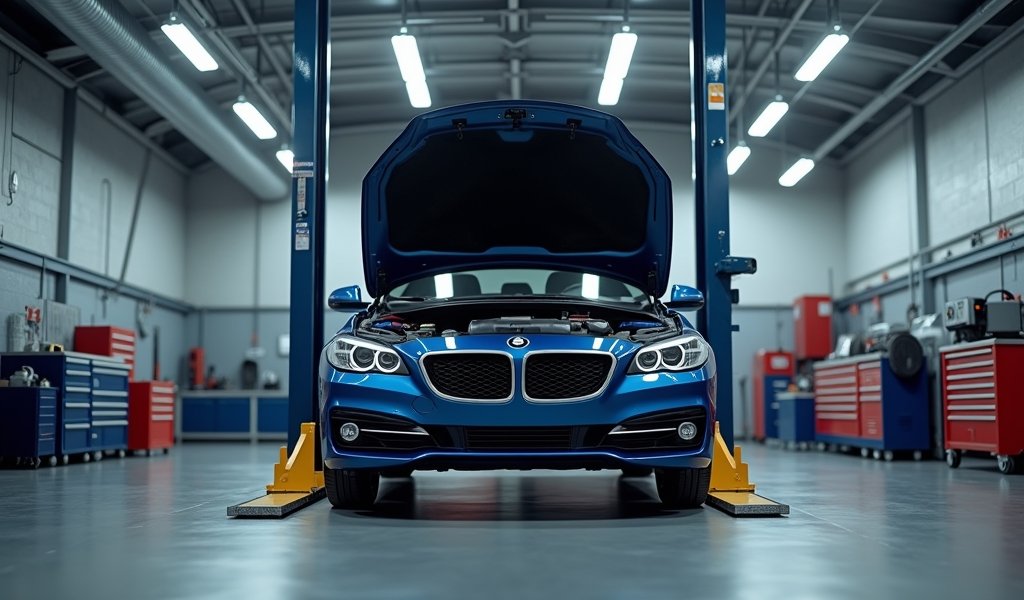Overview
Car batteries typically last 3-5 years, though lifespan varies based on driving habits, climate, and maintenance practices including limiting short trips, keeping terminals clean, and monitoring for warning signs like slow cranking or dimming lights. The article provides a complete maintenance schedule and replacement guidelines, emphasizing that proactive care can significantly extend battery life while preventing unexpected failures.
Table of Contents
- Understanding Car Batteries: Lifespan and Factors
- Signs Your Car Battery Is Failing
- 5 Proven Ways to Extend Your Car Battery Life
- How Climate Affects Your Battery’s Lifespan
- Battery Maintenance Schedule You Should Follow
- When to Replace: A Practical Guide
- Conclusion
- Frequently Asked Questions
Understanding Car Batteries: Lifespan and Factors
Ever wondered how long do car batteries last before they leave you stranded in a parking lot? As a mechanic with over 15 years of experience, I’ve seen batteries fail after just 2 years and others soldier on for 7 years or more. On average, you can expect about 3-5 years from a standard lead-acid battery under normal conditions.
The truth is, battery life isn’t set in stone. It varies widely based on several key factors that most drivers don’t realize they control. Your driving habits, climate, and maintenance routine all play crucial roles in determining whether you’ll be on the lower or higher end of that spectrum.
Modern vehicles with power-hungry electronics tend to drain batteries faster than older models. Those short trips to the grocery store? They’re actually worse for your battery than longer drives since the charging system doesn’t get enough time to replenish what’s used during startup. And if you live in Phoenix or Minneapolis, your battery faces extra challenges from extreme temperatures that accelerate internal chemical degradation.
Let’s break down what’s actually happening inside your battery. The typical 12-volt car battery contains lead plates submerged in an electrolyte solution (sulfuric acid and water). Every time you start your car, a chemical reaction produces electrons that flow through your vehicle’s electrical system. This process causes gradual sulfation—lead sulfate crystals building up on the plates—which reduces capacity over time.
Quality matters too. Premium batteries with higher calcium content and better internal construction generally last longer than budget options. I’ve seen this countless times in my shop—the $80 battery typically needs replacement sooner than the $150 model with the same specifications.
Signs Your Car Battery Is Failing
Batteries rarely fail without warning. Recognizing the early signs can save you from that dreaded moment when your car refuses to start. The most obvious indicator is a slow engine crank—that sluggish “rur…rur…rur” sound before the engine catches. If starting your vehicle sounds more labored than usual, your battery is likely weakening.
Dashboard warning lights are another telltale sign. Modern vehicles have sophisticated monitoring systems that detect when battery voltage drops below optimal levels. That little battery-shaped icon isn’t just decorative—it’s trying to tell you something important!
Have you noticed your headlights dimming when idling? Or perhaps your power windows moving slower than usual? These symptoms indicate your battery struggles to maintain consistent voltage. Electrical components becoming erratic—like flickering interior lights or a radio that resets itself—are also clear warnings that your battery is on its last legs.
Physical changes matter too. Take a moment to actually look at your battery. Corrosion around the terminals (that white, green, or blue powdery substance) indicates acid leakage and poor connections. A battery case that appears swollen or misshapen points to internal damage, often from excessive heat or overcharging. And if there’s a rotten egg smell when you pop the hood? That’s hydrogen sulfide gas escaping, which means your battery is likely overheating or overcharging.
Don’t ignore these warning signs. According to a study by AAA, battery-related issues remain one of the top reasons for roadside assistance calls, with most drivers missing these early indicators until it’s too late.

5 Proven Ways to Extend Your Car Battery Life
After replacing thousands of batteries over my career, I’ve identified five strategies that genuinely make a difference in extending battery life. These aren’t just theories—they’re proven techniques that I’ve seen work time and again in real-world conditions.
1. Limit Short Drives
Short trips are surprisingly harsh on your battery. Starting your engine requires a significant power draw, and your alternator needs about 20 minutes of driving to properly recharge what was used during startup. If possible, combine errands into one longer trip rather than several short ones. When your daily commute is unavoidably short, consider a monthly longer drive to fully recharge your battery or investing in a quality trickle charger for overnight use.
2. Keep It Clean
Corrosion on battery terminals creates resistance that prevents proper charging. Every 3-6 months, disconnect your battery (negative terminal first) and clean the terminals with a mixture of baking soda and water. A wire brush works wonders for removing buildup. Once clean and dry, apply a thin coating of petroleum jelly or commercial battery terminal protectant to prevent future corrosion.
This simple maintenance task takes just 15 minutes but can add months to your battery’s useful life. I’ve seen severely corroded connections reduce battery life by up to 50%!
3. Secure the Battery Properly
A loose battery bouncing around under your hood is a disaster waiting to happen. Excessive vibration damages internal components and can crack the case, leading to leaks and premature failure. Ensure your battery is firmly secured in its tray with properly tightened hold-down clamps. If you notice any movement, address it immediately—it’s an easy fix that prevents serious problems.
4. Minimize Power Drain When Parked
Modern vehicles have numerous systems that continue drawing small amounts of power even when parked. While necessary for maintaining memory settings and security systems, additional accessories can accelerate battery drain. Always turn off lights, the radio, and accessories before shutting down your vehicle. For longer periods of non-use (more than a week), consider using a battery disconnect switch or a quality maintenance charger designed for long-term connection.
5. Keep Your Charging System Healthy
Your battery is part of a larger electrical ecosystem. A failing alternator or voltage regulator can overcharge or undercharge your battery, significantly shortening its life. During your regular service visits, request a charging system check. Most shops include this in standard diagnostics, measuring the alternator’s output and the voltage regulator’s function. According to Interstate Batteries research, up to 40% of premature battery failures are actually caused by charging system issues rather than the battery itself.
How Climate Affects Your Battery’s Lifespan
Weather impacts your battery more than almost any other factor, and understanding these effects can help you adapt your maintenance strategy accordingly. Extreme temperatures—both hot and cold—are battery killers, but for different reasons.
In hot climates like the Southwest, high temperatures accelerate the chemical reactions inside your battery, causing faster internal corrosion and water evaporation from the electrolyte solution. A battery that might last 5 years in moderate conditions could fail in just 2-3 years in Phoenix or Las Vegas. If you live in a hot region, park in shaded areas whenever possible and consider a battery with higher heat resistance, typically labeled as “South/West” batteries by manufacturers.
Cold weather presents a different challenge. When temperatures drop below freezing, the chemical reactions in your battery slow dramatically, reducing its ability to produce power. Simultaneously, your engine requires more power to start due to thicker oil and increased resistance. This double whammy explains why battery failures are so common on the first really cold morning of winter.
In northern climates, consider these specialized approaches:
- Use a battery with higher Cold Cranking Amps (CCA) rating than the minimum required for your vehicle
- Install a battery blanket or insulator in extreme conditions
- Keep your battery fully charged during winter months, as partially charged batteries freeze more easily
- Consider a battery with absorbed glass mat (AGM) technology, which performs better in cold conditions
Humidity also plays a role, particularly in coastal areas. Higher moisture levels can accelerate corrosion on terminals and connections. In these environments, more frequent terminal cleaning and the application of anti-corrosion sprays or pads becomes especially important.
The climate effect is so significant that many battery manufacturers now produce region-specific models. These aren’t marketing gimmicks—they contain different internal components and chemical formulations designed for specific environmental challenges.
Battery Maintenance Schedule You Should Follow
A consistent maintenance schedule can dramatically extend your battery’s useful life. Here’s what I recommend to my clients based on real-world results I’ve observed over thousands of service appointments:
Monthly:
- Visual inspection for corrosion, leaks, or case bulging
- Check that connections are tight (but don’t overtighten)
- Ensure the battery is clean and free of debris on top (which can cause discharge)
Quarterly:
- Clean terminals and connections if any corrosion is visible
- Check the battery hold-down is secure
- For conventional (non-sealed) batteries, check electrolyte levels and add distilled water if needed
Bi-annually (Spring and Fall):
- Have a professional load test performed to measure actual capacity
- Inspect cables for cracks or damage
- Check for parasitic drains if the battery seems to discharge when not in use
- Have your charging system tested as part of your regular vehicle inspection
Before Extended Storage:
- Fully charge the battery
- Clean terminals thoroughly
- Consider disconnecting the negative terminal (if your vehicle doesn’t have sensitive electronics that require constant power)
- Alternatively, connect a quality maintenance/float charger designed for long-term use
For older vehicles or batteries over three years old, I recommend increasing the frequency of professional load testing to quarterly. This small investment in preventive diagnostics costs far less than emergency roadside service or being late to important appointments because of battery failure.
Remember that different battery types have specific maintenance requirements. Traditional flooded lead-acid batteries need water level checks, while AGM (Absorbed Glass Mat) and gel cell batteries are maintenance-free in terms of fluid levels but still benefit from regular terminal cleaning and testing.

When to Replace: A Practical Guide
Knowing exactly when to replace your battery rather than trying to squeeze more life from it can save you from inconvenient breakdowns. In my experience, there’s a sweet spot for replacement that balances maximum value with minimal risk.
As a general rule, once your battery reaches the 3-year mark, start paying closer attention to its performance. At 4 years, consider proactive replacement if you notice any performance issues at all, especially before seasons with temperature extremes. By year 5, even batteries that seem to be performing well are living on borrowed time.
Here are the non-negotiable signals that replacement is needed immediately:
- Your battery fails a load test (showing less than 50% of its rated capacity)
- The case is physically distorted, cracked, or swollen
- You’ve needed jump starts more than once in a month (without leaving accessories on)
- Battery fluid is low and can’t be refilled (in conventional batteries)
- The battery doesn’t hold a charge overnight despite a healthy charging system
When shopping for a replacement, don’t simply buy the cheapest option that fits. Consider these factors:
- Reserve capacity (RC) is often more important than cold cranking amps (CCA) for vehicles with numerous electronics
- Match or exceed the original battery’s specifications
- Consider upgrading to an AGM battery if you have a high-demand electrical system or live in an extreme climate
- Check the manufacturing date—never buy a battery that’s been sitting on the shelf for more than 6 months
Installation matters too. When replacing your battery, clean the cable ends and terminal posts thoroughly. Apply anti-corrosion washers or terminal spray before connecting. Ensure the hold-down mechanism is secure without overtightening (which can crack the case). Finally, reset any systems that might need it after power loss—clocks, radio presets, power window calibration, etc.
Conclusion
Understanding how long car batteries last isn’t just about knowing the 3-5 year average lifespan—it’s about recognizing that your actions directly influence whether you’ll fall on the shorter or longer end of that range. Through proper maintenance, mindful driving habits, and awareness of warning signs, you can maximize your battery’s service life and avoid the frustration of unexpected failures.
The five proven strategies we’ve covered—limiting short drives, keeping connections clean, securing your battery properly, minimizing power drain, and maintaining your charging system—can add significant time to your battery’s useful life. Think of these as small investments that pay dividends in reliability and reduced long-term costs.
Remember that your local climate plays a major role in battery longevity, so tailor your maintenance approach accordingly. What works in Seattle might not be sufficient in Scottsdale. By following the maintenance schedule outlined and knowing when it’s time for a strategic replacement, you’ll avoid being among the millions of drivers who call for roadside assistance with battery issues each year.
Take care of your battery, and it will take care of you—keeping all those essential electrical systems powered up and your vehicle ready to go whenever you need it.
Frequently Asked Questions
How can I tell the age of my car battery?
Look for a date code stamped on the battery case, usually a letter (A-L) for month and a number for year. For example, C9 would mean March 2019.
Does jumpstarting damage my car battery?
Occasional jumpstarts won’t damage a healthy battery, but frequent jumpstarts indicate an underlying issue. Have your battery and charging system checked if you need more than one jumpstart per month.
Should I disconnect my battery when not using my car for weeks?
For storage beyond 2-3 weeks, either disconnect the negative terminal or use a battery maintainer. Modern vehicles with multiple computers may require a maintainer rather than disconnection.
Are more expensive batteries always better?
Higher-priced batteries typically offer better construction, more lead content, and longer warranties. The price premium usually translates to longer service life and better performance in extreme conditions.
Can I replace my car battery myself?
Most batteries can be replaced as a DIY project with basic tools. Just remember to disconnect the negative terminal first, secure the battery properly, and properly dispose of the old battery at an authorized recycling location.

